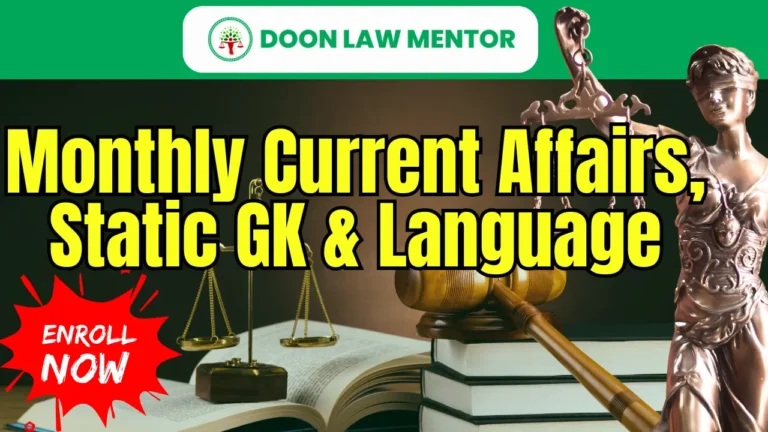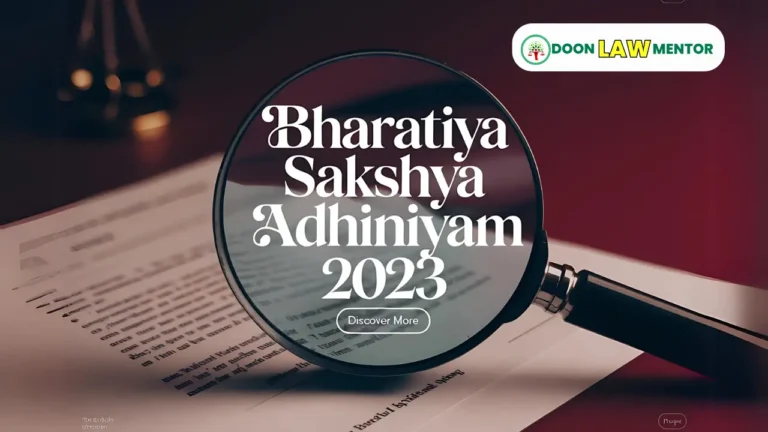In Arvind Singh v. ED (2025), the SC slams ED for baseless accusations in PMLA cases, demanding specific evidence. Explore the case, its implications, and exam tips for judiciary aspirants.
Table of Contents
Introduction
In a sharp rebuke, the Supreme Court of India in Arvind Singh v. Directorate of Enforcement (2025 SC) criticized the Enforcement Directorate (ED) for its pattern of making unsubstantiated allegations in Prevention of Money Laundering Act (PMLA) cases without specific evidence. During a bail hearing in the alleged Chhattisgarh liquor scam, a bench comprising Justice Abhay S Oka and Justice Ujjal Bhuyan highlighted the ED’s failure to link accused Arvind Singh to alleged illegal earnings of Rs. 40 crores. The Court’s remarks underscore the need for evidentiary rigor in financial crime prosecutions and raise concerns about prolonged detentions under stringent laws like PMLA. For judiciary exam aspirants, this case is pivotal for criminal law, PMLA provisions, and judicial oversight. This blog delves into the case details, the Court’s observations, its implications, and preparation strategies for exams like DJS, MPCJ, and AIBE, focusing on the keyword SC slams ED for baseless accusations.
Background of the Case
The Arvind Singh case arose from a bail plea filed by Arvind Singh, an accused in the alleged Chhattisgarh liquor scam, investigated under the PMLA. Singh, detained for 10 months, faced charges in a complex case involving 21 accused, 25,000 pages of documents, and 150+ witness statements. The ED filed one main and three supplementary complaints, with the investigation still ongoing. The scam, estimated at Rs. 2000 crores, allegedly involved a parallel liquor business with counterfeit holograms and inflated bottle sales.
Singh’s counsel argued that the prolonged custody and voluminous material justified bail, citing prior bail grants to public servants Anil Tuteja and Arun Pati Tripathi due to lack of prosecution sanction under Section 197 CrPC. The ED, represented by Additional Solicitor General SV Raju, countered that Singh was central to the scam, linked to co-accused Anwar Dhebar through WhatsApp chats discussing liquor policy and counterfeit sales. However, the ED struggled to provide specific evidence tying Singh to the alleged Rs. 40 crore proceeds of crime, prompting sharp criticism from the Court.
Read More: High Court Judges Appointment Process: Supreme Court’s Unveiled Detailed Framework
Supreme Court’s Observations
The Supreme Court’s remarks in Arvind Singh v. ED highlight systemic issues in ED’s prosecution practices, with a focus on SC slams ED for baseless accusations. Key points include:
- Pattern of Baseless Allegations:
- Justice Abhay S Oka remarked: “We have seen umpteen number of complaints of ED. This is the pattern – just make allegations without any reference to anything.”
- The Court criticized the ED for repeatedly filing complaints with general accusations, lacking specific material to substantiate claims.
- Lack of Evidence Against Singh:
- The ED alleged Singh earned Rs. 40 crores jointly with Vikas Agarwal, who absconded to Dubai. However, Justice Oka questioned why Agarwal was not named as an accused or prosecuted, despite an LOC issued against him.
- The Court pressed for evidence linking Singh to Anurag Traders or related companies involved in inflated bottle sales, asking if Singh was a director, shareholder, or managing director. The ED failed to provide such details.
- Evidentiary Rigor Demanded:
- Justice Oka emphasized: “These are general allegations. What is the material to show that he has earned Rs. 40 crores?”
- The Court noted that the ED’s reliance on WhatsApp chats and transactions involving Welcome Distilleries and Anurag Traders lacked specificity to connect Singh directly to the proceeds of crime.
- Bail and Custody Concerns:
- The Court clarified that there is no legal requirement for one year of custody before granting bail, rejecting the ED’s argument that Singh’s 10-month detention was insufficient.
- The voluminous material (25,000 pages) was not a valid reason to deny bail, as it does not negate the nature of the allegations.
- ED’s Procedural Lapses:
- The Court questioned the ED’s failure to include Vikas Agarwal as an accused in the ECIR or complaints, despite alleging his role in the Rs. 40 crore earnings.
- Justice Oka noted: “You have made specific allegation that he earned Rs. 40 crores, now you are not able to show connection of this man with this or any other company.”
- Adjournment for Evidence:
- Unable to provide specific evidence, ASG Raju sought time to submit details, claiming Singh was running the implicated companies. The Court scheduled further hearing for Friday, signaling its intent to scrutinize the ED’s claims.
Legal and Constitutional Implications
The Arvind Singh case, with its focus on SC slams ED for baseless accusations, has significant implications for criminal law, PMLA enforcement, and judicial oversight:
- Evidentiary Standards in PMLA Cases:
- The ruling emphasizes the need for specific, tangible evidence in PMLA prosecutions, protecting accused persons from arbitrary allegations and prolonged detentions.
- Judicial Oversight of ED:
- The Court’s scrutiny of the ED’s practices reinforces judicial checks on investigative agencies, ensuring compliance with due process under Article 21.
- Bail Jurisprudence:
- The clarification that bail does not require a minimum custody period strengthens bail jurisprudence, particularly in stringent laws like PMLA, where liberty is often curtailed.
- Protection Against Arbitrary Prosecution:
- By questioning the ED’s failure to prosecute co-accused like Vikas Agarwal, the Court highlights the need for fair and consistent prosecution practices.
- Judiciary Exam Relevance:
- The case is critical for topics like PMLA provisions, bail under Section 439 CrPC, Article 21, and investigative agency accountability. It’s a must-study for criminal law and constitutional law in DJS, MPCJ, and AIBE.
Sample MCQ: Q: In Arvind Singh v. ED (2025), the Supreme Court criticized the ED for: A) Delaying the investigation B) Making baseless accusations without evidence C) Granting bail to co-accused D) Failing to file supplementary complaints Answer: B) Making baseless accusations without evidence
Read more: What is a NOTAM? India’s 2025 Operation Sindoor & Aviation Law Explained
Why This Matters for Judiciary Aspirants
The Arvind Singh case is a cornerstone for judiciary exam preparation, intersecting criminal law, PMLA, and constitutional law:
- Criminal Law: The case clarifies bail principles and evidentiary standards in PMLA cases, crucial for CrPC and special laws questions.
- PMLA Provisions: Understanding Section 3 (money laundering) and Section 45 (bail conditions) is essential for AIBE and APO exams.
- Constitutional Law: The focus on Article 21 (due process) and judicial oversight is key for prelims and mains.
- Current Affairs: As a 2025 case, it’s a hot topic for general knowledge and interview rounds in DJS, MPCJ, and CLAT.
Preparation Tips for Judiciary Exams
- Study PMLA Provisions:
- Revise Section 3 (offence of money laundering) and Section 45 (twin conditions for bail) of the PMLA.
- Understand the ECIR process and prosecution requirements.
- Criminal Procedure Focus:
- Study Section 439 CrPC (bail by High Court/Session Court) and Section 197 CrPC (sanction for public servants).
- Learn the principles of bail vs. jail in special laws.
- Case Law Analysis:
- Analyze precedents like Vijay Madanlal Choudhary vs. Union of India (2022) for PMLA enforcement and Nikesh Tarachand Shah vs. Union of India (2018) for bail conditions.
- Link Arvind Singh to Article 21 and investigative agency accountability.
- Practice Questions:
- Solve MCQs and mains questions on PMLA, bail, and evidentiary standards. Use past papers from DJS, MPCJ, and AIBE.
- Example: “Discuss the Supreme Court’s criticism of the ED’s prosecution practices in Arvind Singh v. ED (2025) and its impact on PMLA cases.”
- Current Affairs Integration:
- Follow updates on Supreme Court rulings via PIB, The Hindu, or LiveLaw. Note how this case impacts ED’s credibility and PMLA enforcement.
Conclusion
The Supreme Court’s remarks in Arvind Singh v. Directorate of Enforcement (2025), emphasizing that the SC slams ED for baseless accusations, mark a critical intervention in PMLA prosecutions. By demanding specific evidence and questioning the ED’s pattern of unsubstantiated claims, the Court protects Article 21 rights and ensures due process in financial crime cases. For judiciary aspirants, this case is a vital study point for criminal law, PMLA provisions, and judicial oversight, offering insights into bail jurisprudence and investigative accountability. Integrate this ruling into your preparation, practice relevant questions, and stay updated to excel in exams like DJS, MPCJ, and AIBE.
Join Our Courses: Master landmark cases like Arvind Singh and ace your judiciary exams with expert-led classes at Doon Law Mentor. Enroll now to boost your legal knowledge and succeed!
Tags: SC Slams ED for Baseless Accusations, Arvind Singh Case, Supreme Court 2025, PMLA, Article 21, Bail Jurisprudence, Judiciary Exam Preparation
Hashtags: #ArvindSinghCase #SupremeCourt2025 #PMLA #BaselessAccusations #JudiciaryExams #DoonLawMentor








